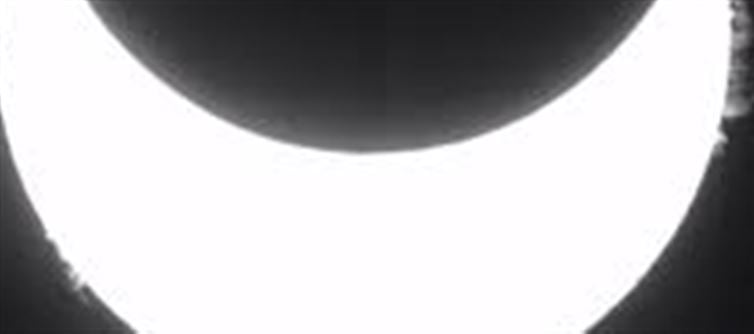
Skywatchers were treated to a cosmic spectacle on september 21 as a deep partial solar eclipse transformed the sun into a glowing crescent. Here’s everything you need to know about this rare and mesmerizing celestial event:
1. Nature’s Celestial Drama
The partial solar eclipse occurred over the Pacific Ocean, where the moon passed in front of the sun, covering a significant portion of its disk. This alignment turned the usual bright sun into a dazzling crescent — almost like a smile in the sky.
2. A Sky Show for Early Risers
This event was visible to those in select regions of the Pacific, including parts of Hawaii and coastal areas of the Americas. Lucky skywatchers witnessed the sun dim and the daylight turn slightly eerie as the moon blocked its light.
3. The Science Behind the Eclipse
A partial solar eclipse happens when the moon, sun, and Earth align imperfectly, causing the moon to cover part — but not all — of the sun’s disk. The result is a dramatic “bite” taken out of the sun, leaving it shaped like a crescent.
4. A Safe view with Solar Glasses
Astronomy experts once again reminded people never to look directly at the sun with the naked eye. Many used solar glasses, pinhole cameras, or telescopes with proper filters to safely enjoy the view.
5. Photographers Capture Stunning Images
Astrophotographers across the Pacific region captured breathtaking shots of the crescent sun against darkened skies. These images are now going viral on social media, allowing those who missed the event to enjoy the beauty virtually.
6. A Cosmic Teaser for Future Eclipses
This partial eclipse served as a reminder that even bigger celestial events are coming. Enthusiasts are already gearing up for the total solar eclipse expected in 2026, which will offer an even more dramatic sight as the sun is completely covered.
7. A Moment of Awe and Connection
Eclipses have fascinated humans for centuries, and this one was no exception. people across the Pacific shared a collective moment of wonder, appreciating how small we are in the vastness of space.
Disclaimer:
The views and opinions expressed in this article are those of the author and do not necessarily reflect the official policy or position of any agency, organization, employer, or company. All information provided is for general informational purposes only. While every effort has been made to ensure accuracy, we make no representations or warranties of any kind, express or implied, about the completeness, reliability, or suitability of the information contained herein. Readers are advised to verify facts and seek professional advice where necessary. Any reliance placed on such information is strictly at the reader’s own risk..jpg)




 click and follow Indiaherald WhatsApp channel
click and follow Indiaherald WhatsApp channel